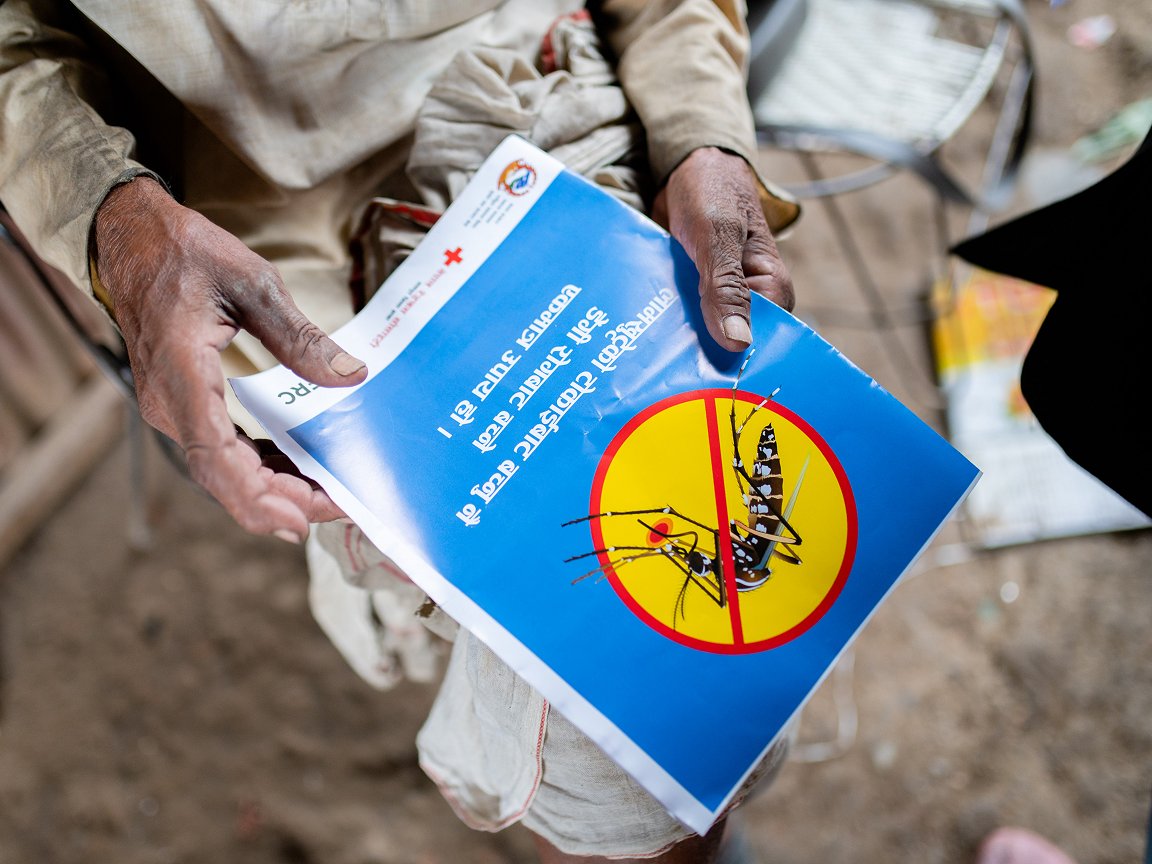
Climate and infectious disease: deeper understanding, faster action

By Tilly Alcayna, Senior Technical Adviser: Health and Climate Change, Climate Centre
A research paper jointly authored by the Climate Centre – one of two important new studies – contains a detailed examination of how infectious diseases are affected by climate factors.
“Infectious diseases pose a substantial threat to public health, affecting billions of people and straining health-care systems worldwide,” says the paper, published last week in the journal Lancet Planetary Health.
It explores how climate factors – including human-induced climate change, natural variability and extremes – can substantially affect the life-cycle of certain infectious disease.
A better understanding of the climate sensitivity of infectious diseases could “help interdisciplinary teams develop tailored climate services for health and more effectively mainstream the use of climate information [to reinforce] outbreak prevention and preparedness,” it adds.
Identifying the climate sensitivity of infectious diseases: a conceptual framework highlights three key characteristics of climate-sensitive infectious diseases: seasonality, geographical distribution, and year-to-year variation linked to climate phenomena.
The paper also explains how climate has complex effects on disease patterns. The effects of temperature, rainfall or humidity, for example, may be delayed as they are propagated through living systems – pathogens, vectors, and animals and human hosts – which all take time to react to environmental changes.
This means that the temperature, rainfall or humidity in one month may influence the risk of diseases only in the next.
Early warning systems that are
‘important in all contexts’
The paper concludes with a discussion of how a deeper understanding of the climate-sensitivity of infectious diseases can enhance prevention, preparedness and response through climate services for health, including the early warning systems that are “important in all contexts”.
A second paper also jointly authored by the Climate Centre reflects “growing interest in integrating anticipatory action into disease outbreak preparedness and response”.
Integrating anticipatory action in disease outbreak preparedness and response in the humanitarian sector, published late last month in BMJ Global Health, looks at possible triggers for such anticipatory action with the benefit of operational experience from UN agencies, the Red Cross Red Crescent, and Médecins Sans Frontières.
Four distinct approaches for triggering are proposed: real-time disease surveillance; weather and climate forecasts; analysis of risk factors such as population displacement, overcrowding, vectors, and weather; and statistical models for predicting the risk of outbreaks – but “with the potential for future integration of all four as phased triggers to enhance outbreak preparedness and response as risks evolve.”
Anticipatory action could improve the timing of interventions and reduce delays in response, the paper argues: “Unlike anticipatory action for extreme climatic events, which mitigate but do not prevent the event, anticipatory action for outbreaks has the potential to contain disease spread early, and, in exceptional cases, to prevent the outbreak from occurring in the first place.”
The approach entails “numerous policy implications”, all of which would be encouraged and enabled by “a shift in mindset from traditional reactive responses to proactive use of available risk information is imperative to reduce preventable suffering.”
This analysis was first outlined last year in a working paper from the Red Cross Red Crescent Working Group on Anticipatory Action and Health containing guidance for National Societies on early action for disease outbreaks and epidemics.
Dengue fever is the world’s fastest-spreading vector-borne disease, the WMO has said in a report on climate services, while the malaria transmission season has also increased significantly in Africa and the Americas in recent decades. In the picture, Nepal Red Cross volunteers supporting a government dengue campaign cleaning and disinfecting locations where mosquitoes breed. (Photo: Pramin Manandhar/Nepal Red Cross via IFRC)